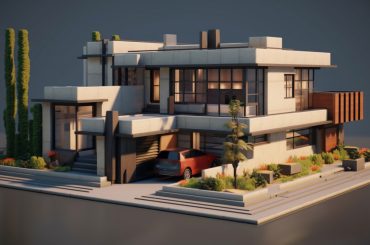Traditional industrial architecture needs to meet the demands of sustainability and environmental preservation. Innovative solutions are urgently needed as we strive for a sustainable future. This article discusses the importance of sustainable industrial design and proposes strategies and principles for creating functional, efficient, and environmentally responsible industrial structures. By embracing innovative approaches, we can pave the way for a sustainable industrial landscape that supports economic growth and ecological well-being.
Understanding sustainability in Industrial Architecture

Sustainable aims to create environmentally friendly, economically viable, and socially responsible buildings that minimize their environmental impact while maximizing efficiency. Fundamental principles in design include optimizing energy usage, incorporating natural elements and ample daylight, allowing for flexibility and erase, and integrating green technologies. Traditional industrial architecture must be more creative, considering environmental impact and employee well-being. Embracing innovative design solutions in architecture can reduce environmental footprint, enhance productivity, and improve employee well-being.
Incorporating energy efficiency in Industrial Design

Energy efficiency is essential in sustainable industrial design. Using energy-efficient systems like advanced insulation, LED lighting, and intelligent HVAC systems, industrial buildings can lower energy consumption. It helps create a greener future and saves businesses money in the long term. Industrial architects can optimize energy consumption by designing buildings with proper insulation, utilizing natural ventilation and daylighting, and incorporating renewable energy sources. Energy management systems and intelligent controls can also be implemented to monitor and regulate energy usage, further enhancing efficiency.
Adaptive reuse and Industrial Architecture
Adaptive reuse is a sustainable approach to repurposing existing industrial structures, which saves resources and preserves their history and character. This approach reduces construction waste, saves energy, and minimizes carbon emissions associated with new building materials. It also revitalizes communities, creates unique workspaces, and lowers project costs. However, it involves challenges like structural limitations, code compliance, and the need for innovative design solutions. By embracing innovative and sustainable design practices, we can transform industrial architecture to meet business needs while benefiting the planet and its inhabitants.
Integrating sustainable materials and technologies

Innovative industrial architecture for a sustainable future requires careful material selection. Numerous eco-friendly options are available today, including reclaimed wood, recycled plastic, bamboo, and hempcrete. These materials offer a range of advantages in addition to reducing carbon emissions. To fully embrace sustainability, renewable energy, and smart technologies should be integrated into industrial buildings. Solar panels can harness the sun’s power, making the buildings more energy-efficient and reducing reliance on fossil fuels. Smart technologies like IoT enable efficient resource management, optimize energy usage and equipment performance, and contribute to a greener and more sustainable future.
The differences between historical and Contemporary Industrial Architecture
Historical industrial architecture refers to the design and construction practices employed in past eras, while contemporary industrial architecture represents the modern approaches. There are several notable distinctions between the two. Historically, the structures were often characterized by ornate detailing, intricate craftsmanship, and traditional materials like brick and stone.
These buildings were usually smaller in scale and focused on preserving aesthetics. Conversely, contemporary architecture prioritizes functionality, efficiency, and sustainable design. It embraces minimalism, clean lines, and the innovative use of glass, steel, and concrete materials. Contemporary industrial buildings tend to be larger in scale, emphasizing open spaces and flexible interiors to accommodate evolving industrial needs. Overall, the shift from historical to modern showcases the changing priorities, advancements, and trends in industrial design.
Case studies: Architecture solutions for a sustainable future
This summary discusses two case studies in the field of industrial architecture. Investigating an industrial building in the first case study reveals its incorporation of renewable energy systems like solar panels and innovative technologies to decrease reliance on traditional power sources. The building prioritizes natural light and ventilation to minimize artificial lighting and air conditioning requirements. This design sets an example for the industry in embracing renewable energy solutions.
The second case study examines the successful adaptive reuse of an existing industrial site, which involved repurposing the building with energy-efficient systems and sustainable materials. This project not only preserved resources but also revitalized the surrounding community. Overall, these case studies emphasize the importance of sustainability and highlight the potential for innovative design and forward-thinking approaches to create a better future.






